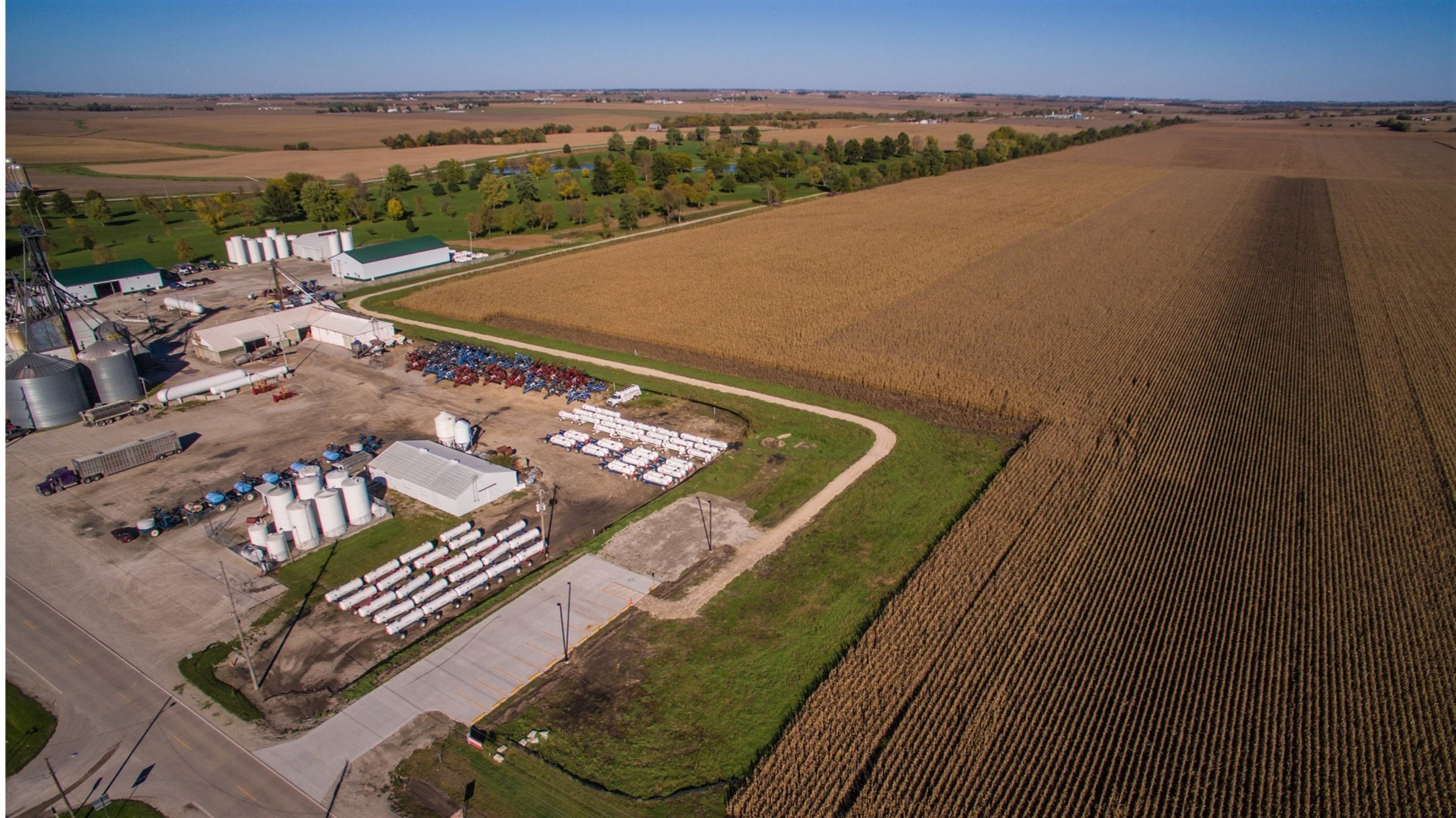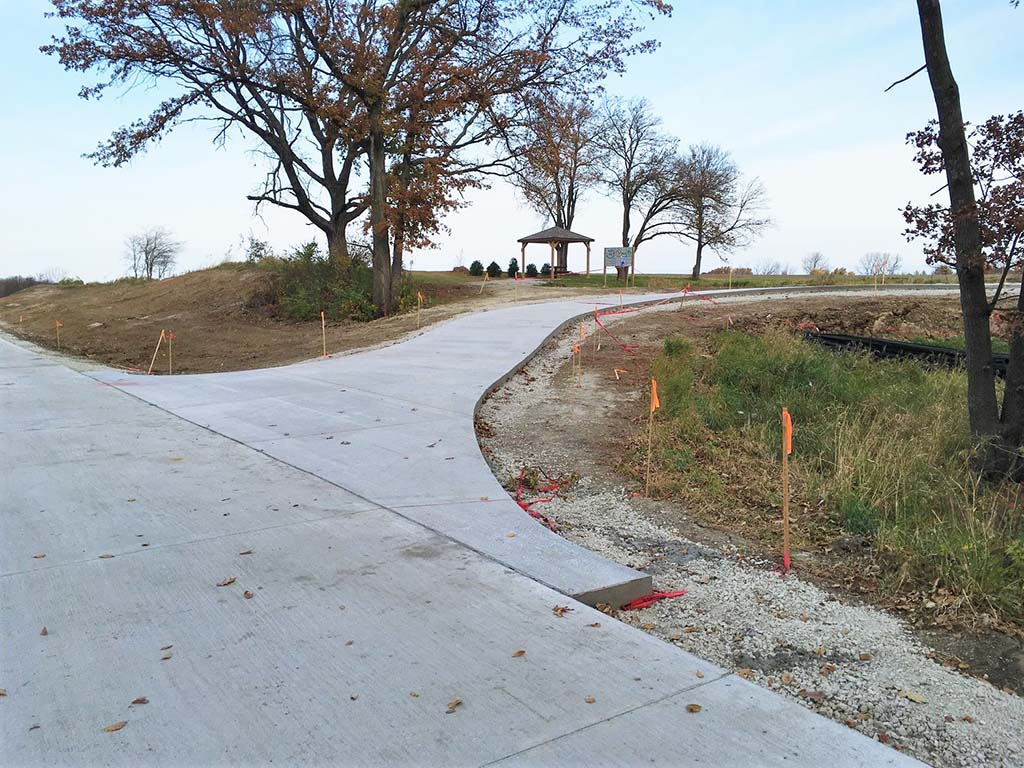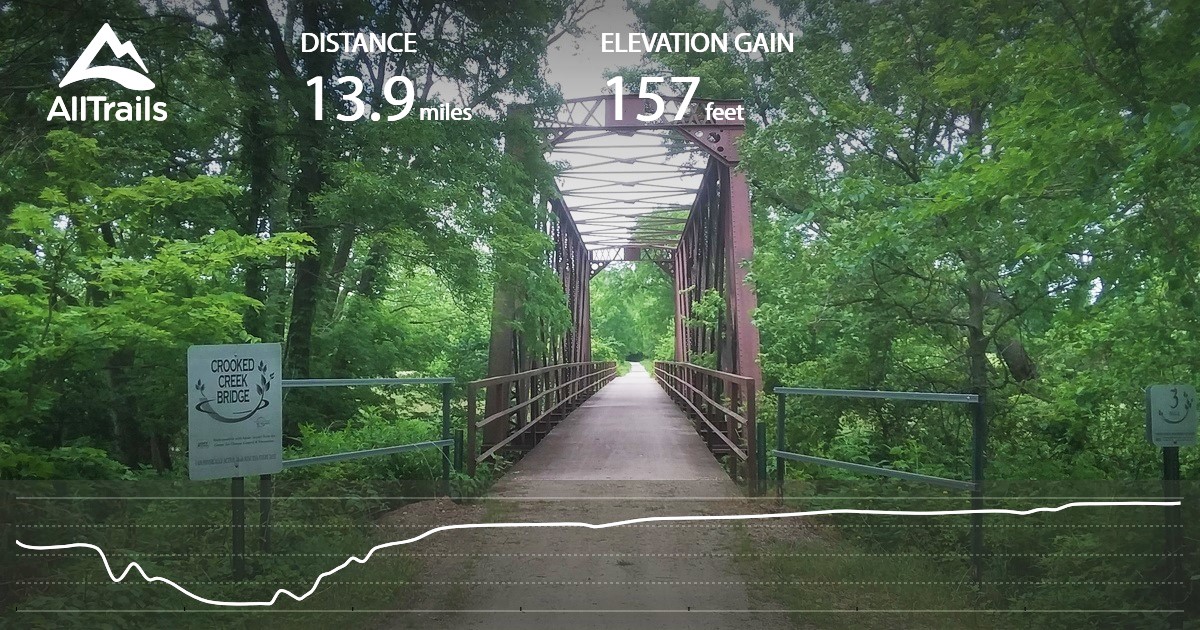The Kewash Nature Trail is a 14-mile rails-to-trails project, connecting the communities of Keota and Washington in southeastern Iowa. Enjoyed by bicyclists, pedestrians and cross-country skiers in the winter, this trail weaves through woods and prairie lands and is a popular regional destination.

Kewash Trail Trailhead in Keota, Iowa
Washington County and the Washington County Conservation Board (WCCB) looked to MSA for design, permitting, funding acquisition, construction engineering and observation services related to grading, paving and extension work for this multi-phased project. The challenge was a constrained timeline of less than three months to complete the trail design, a quick turnaround necessary to get the project out for bid in time to secure desired funding.
While planning for the grading and paving of one particular steeper trail segment, it was determined that MSA needed to coordinate with the Iowa DOT and obtain an Accessibility Exception Certificate. Such certificates are necessary to accommodate grades in excess of five percent, one of which was located on the Kewash Trail Spur, a connector to the regional campus of Kirkwood Community College in the City of Washington. MSA determined that the five percent max grade was structurally impracticable due to the level of earthwork that would be required, a job that would tip the budget scale beyond a reasonable amount. The solution was to install additional signage along the trail alerting users to the steep grade and positioning benches along the trail to provide places of rest.

During construction
Because the design was completed in an expedited manner, the project was let in early 2018, allowing the WCCB to meet funding application deadlines. They also successfully fulfilled all requirements for the funding, relying on MSA’s experience with similar DOT projects and construction observation.
A variety of financial backing was procured for this project, including the award of Washington County Riverboat Foundation and Transportation Alternatives Program (TAP) grants. The project also received very competitive bids, which provided additional cost savings and allowed the county and conservation board to include other “wish-list” components to the project. Native plant and flower seeding were one of these additions, an aesthetic element that will enhance the beauty of already beloved trail for many generations to come.
